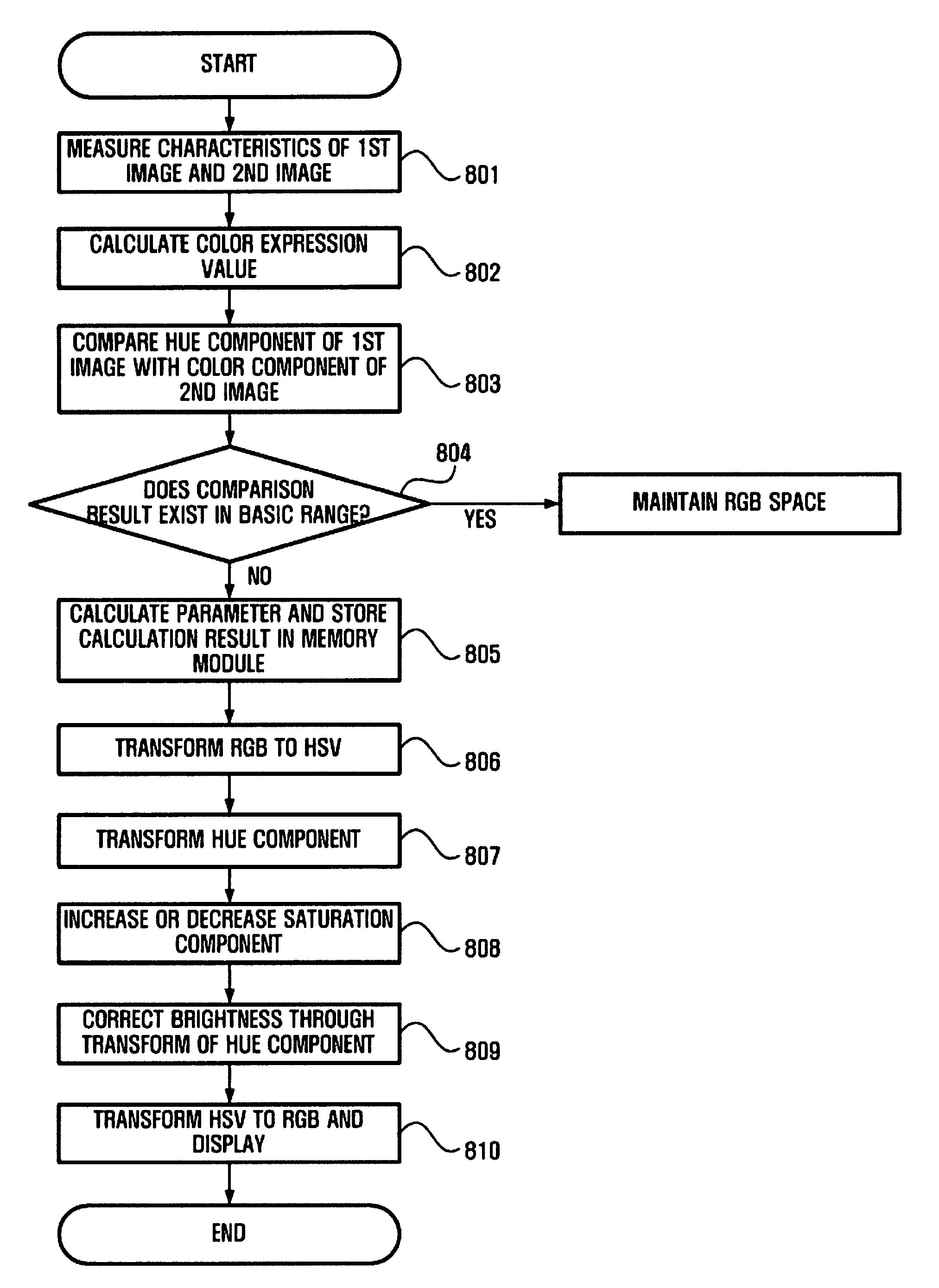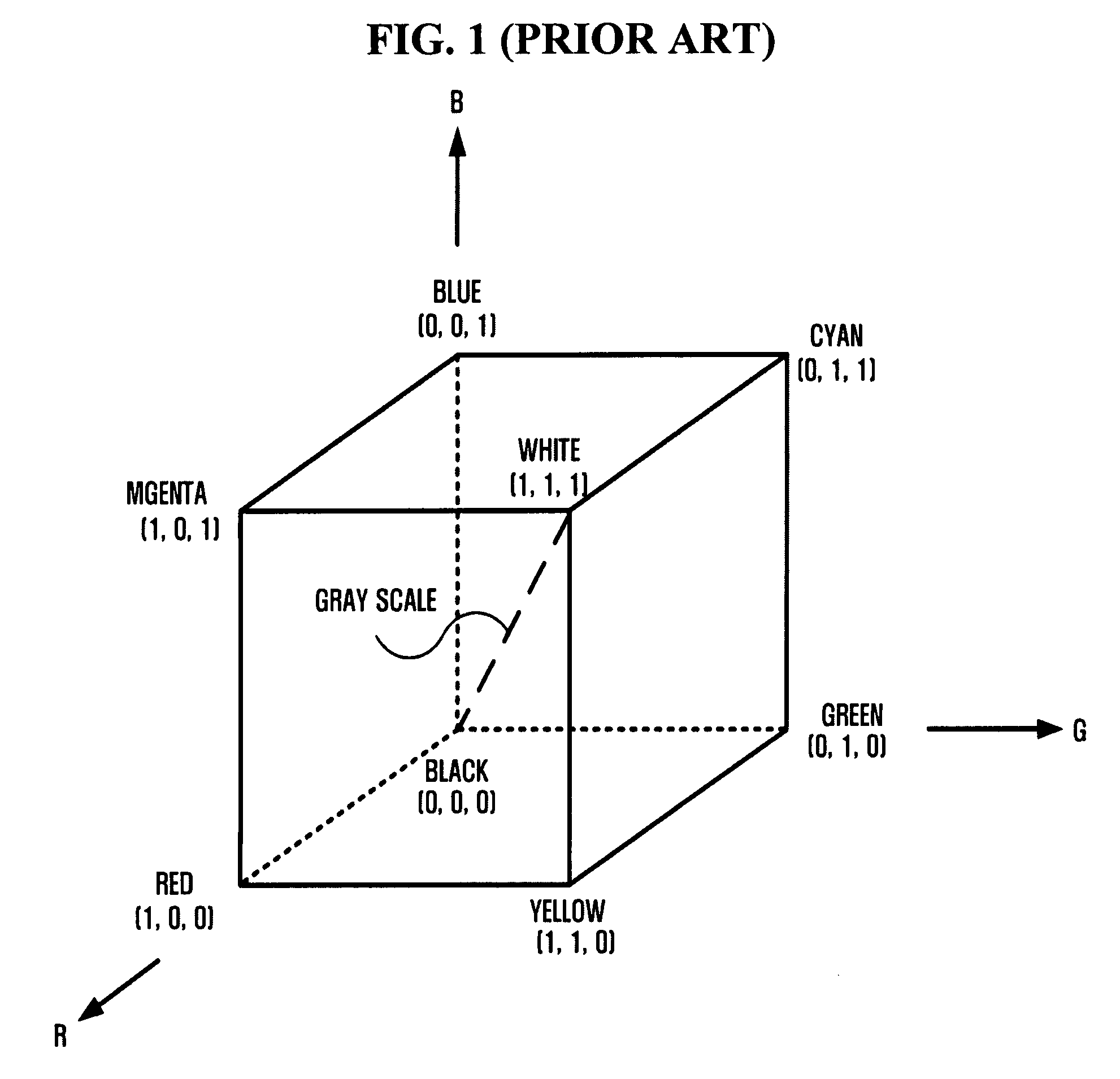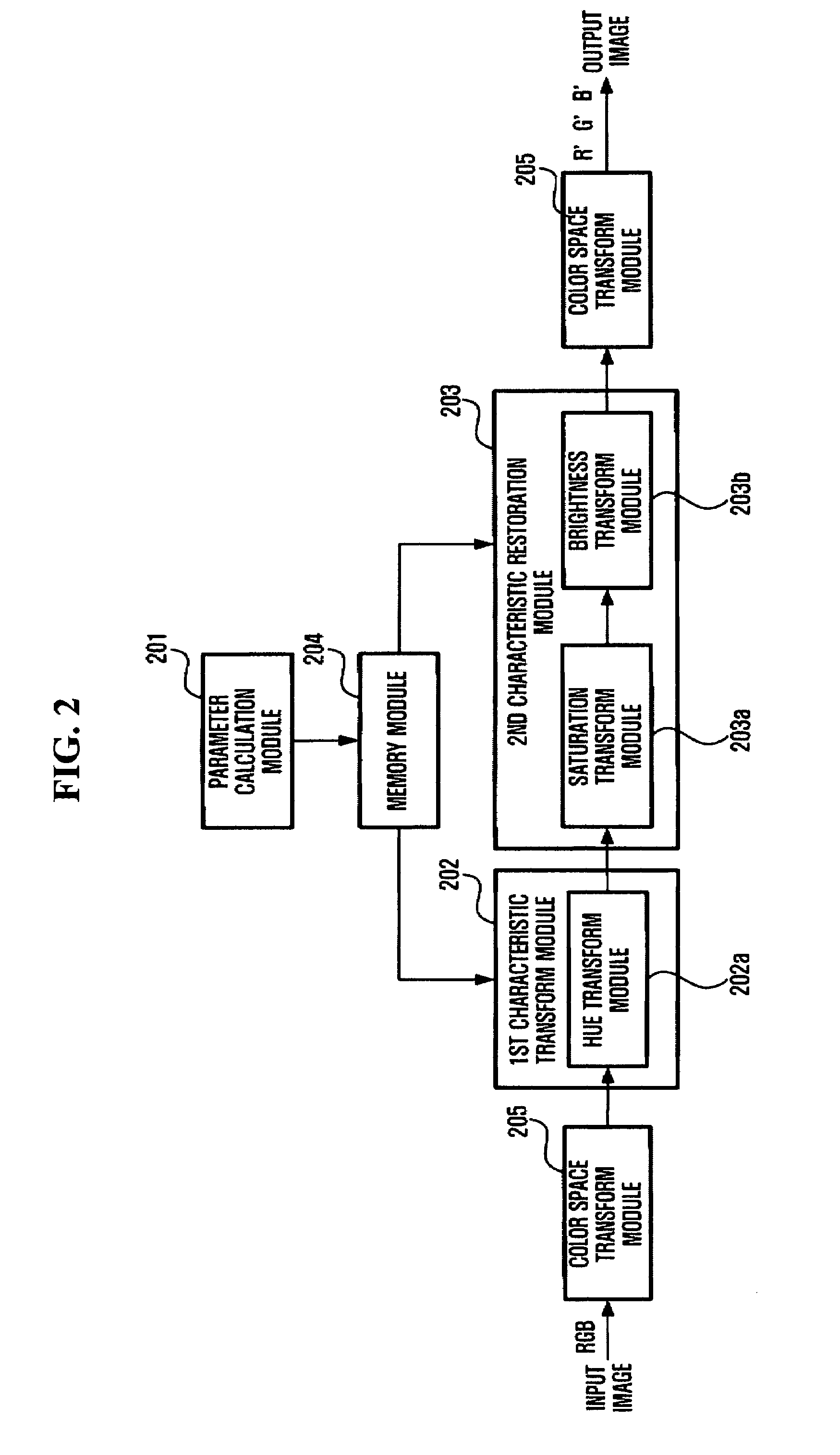System, method and medium performing color correction of display images
a technology of display image and color correction, applied in the field of system, method and medium correcting the color of display image, can solve the problems of difficult implementation of this method, inability to provide objective data on color, and subjective recognition of color as a difficult aspect of controlling color, etc., to achieve the effect of maintaining maximum brightness and saturation
- Summary
- Abstract
- Description
- Claims
- Application Information
AI Technical Summary
Benefits of technology
Problems solved by technology
Method used
Image
Examples
Embodiment Construction
[0022]Reference will now be made in detail to embodiments of the present invention, examples of which are illustrated in the accompanying drawings, wherein like reference numerals refer to like elements throughout. Embodiments are described below to explain the present invention by referring to the figures.
[0023]Representative color models such as CIE, CIELab, RGB (Red, Green and Blue), CYM (Cyan, Magenta and Yellow), CMYK (Cyan, Magenta, Yellow, and black), or HSV (Hue, Saturation, and Value for brightness) value models, may be used to describe colors in a specific environment using an objective color evaluating technique. These models may be used for output apparatuses, such as display apparatuses or printers, or used for intuitive color designation by a person. Accordingly, as references thereto will be made in aspects of the present invention, first such color models will be briefly explained.
[0024]CIE Color Model and CIELab Color Model
[0025]The CIE color model was first develop...
PUM
| Property | Measurement | Unit |
|---|---|---|
| brightness | aaaaa | aaaaa |
| hue transform function | aaaaa | aaaaa |
| brightness transform function | aaaaa | aaaaa |
Abstract
Description
Claims
Application Information
 Login to View More
Login to View More - R&D
- Intellectual Property
- Life Sciences
- Materials
- Tech Scout
- Unparalleled Data Quality
- Higher Quality Content
- 60% Fewer Hallucinations
Browse by: Latest US Patents, China's latest patents, Technical Efficacy Thesaurus, Application Domain, Technology Topic, Popular Technical Reports.
© 2025 PatSnap. All rights reserved.Legal|Privacy policy|Modern Slavery Act Transparency Statement|Sitemap|About US| Contact US: help@patsnap.com



